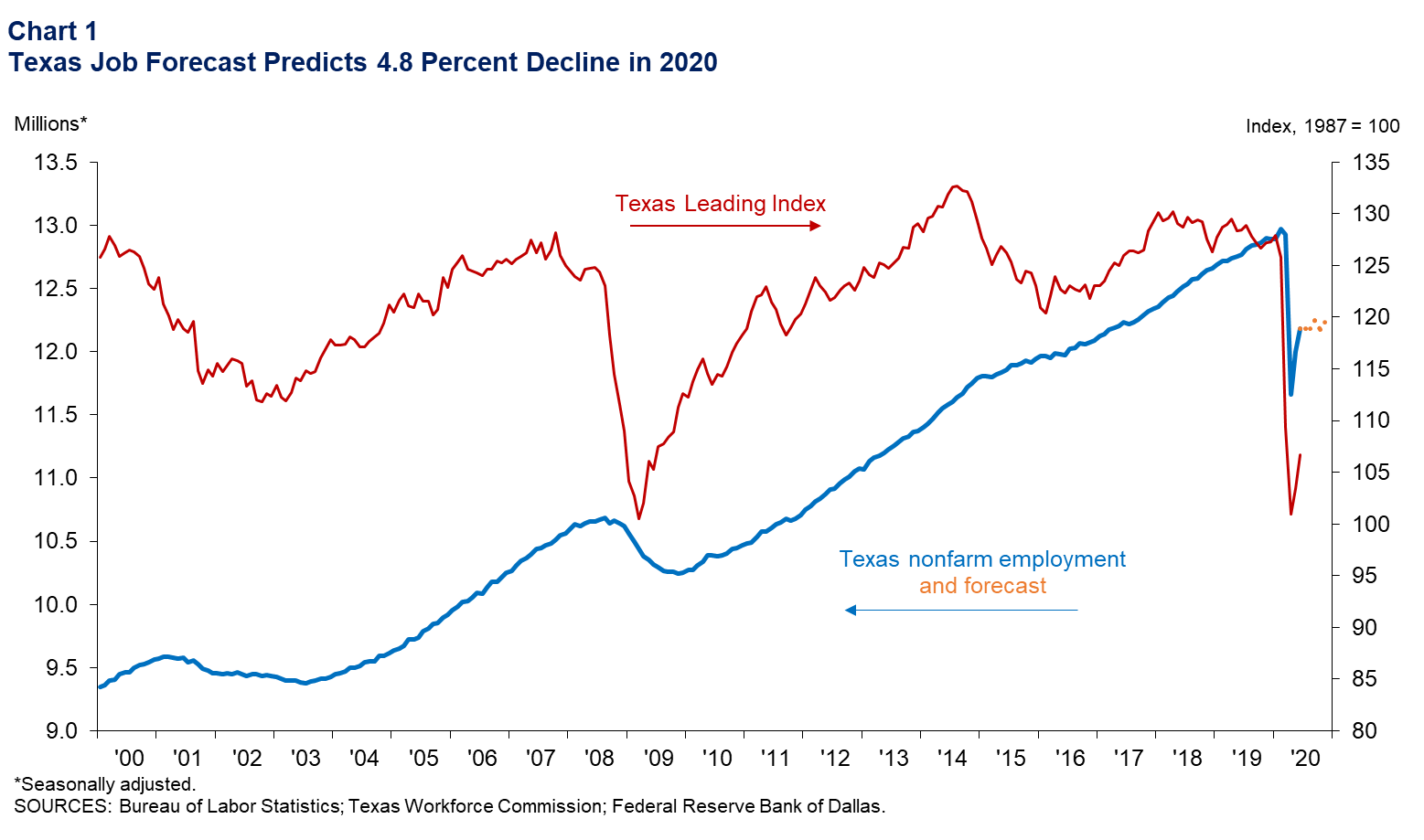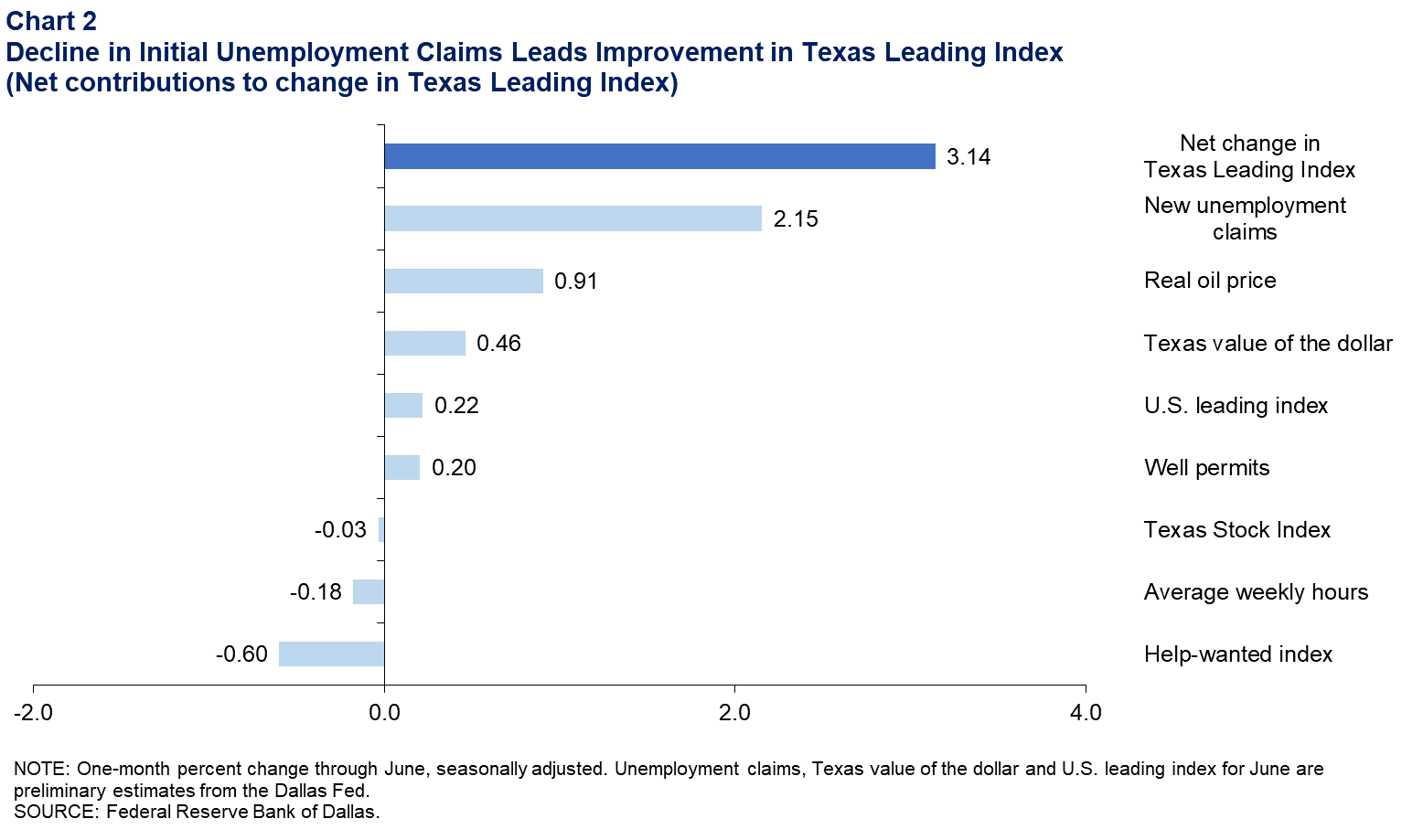Texas Employment Forecast

July 17, 2020
Texas jobs increased 19.8 percent (1.5 percent non-annualized) in June after increasing a revised 41.2 percent (2.9 percent non-annualized) in May. Employment is down 17.2 percent (6.1 percent non-annualized) since February.
The Texas Leading Index increased for the second consecutive month in June after sharp declines in March and April. Using our top-down model based on national forecasts, COVID-19 infection rates and oil futures prices, we estimate that Texas jobs will recover in the second half of the year but not enough to account for the sharp declines in March and April. The Texas Employment Forecast suggests jobs will decline 4.8 percent this year (December/December). Based on the forecast, 619,000 jobs will be lost in the state this year, and employment in December 2020 will be 12.3 million (Chart 1). Forecast uncertainty remains elevated as daily infections and hospitalizations in the state continue to rise, presenting significant downside risks to the outlook.
“After broad-based improvement across industries and metro areas in May, the pattern of growth was more mixed in June,” said Keith R. Phillips, Dallas Fed assistant vice president and senior economist. “While jobs grew at a slower but still strong pace in private service-producing industries, jobs in manufacturing slowed from 17.1 percent in May to 0.1 percent in June. Meanwhile, jobs in the oil and gas sector and government continued to decline. Job growth increased in many metro areas such as Dallas, Ft. Worth, Austin and El Paso but slowed in others such as Houston and San Antonio.”
The Texas unemployment rate decreased from 13.0 percent in May to 8.6 percent in June. After surging to 4.1 percent (non-annualized) in May, labor force growth slowed somewhat to 2.5 percent in June.
Five of the eight indicators gave positive contributions to the Texas Leading Index in June (Chart 2). A sharp drop in initial claims for unemployment insurance and a healthy increase in oil prices provided the strongest contributions to gains in the index. Additional positive contributions came from a decline in the Texas value of the dollar, and increases in permits to drill oil and gas wells and in an early estimate of the U.S. leading index. Partially offsetting these positive signals were declines in help-wanted advertising, average weekly hours worked in manufacturing and the stock prices of Texas-based companies.


Next release: August 21, 2020
Methodology
The Dallas Fed Texas Employment Forecast projects job growth for the calendar year and is estimated as the 12-month change in payroll employment from December to December.
Due to the rapid onset of the COVID-19 pandemic, the forecasting model used in this release of the Dallas Fed Texas Employment Forecast differs from the model used historically. In this case, payroll employment for June to December, is estimated based on expectations for U.S. GDP growth for the remainder of 2020, an estimate of direct COVID-19 impacts in March, April, and July, and expected prices of West Texas Intermediate crude oil based on the futures curve.
For additional details see http://dallasfed.org/research/forecast/
Contact Information
For more information about the Texas Employment Forecast, contact Keith Phillips at keith.r.phillips@dal.frb.org or Christopher Slijk at christopher.slijk@dal.frb.org.